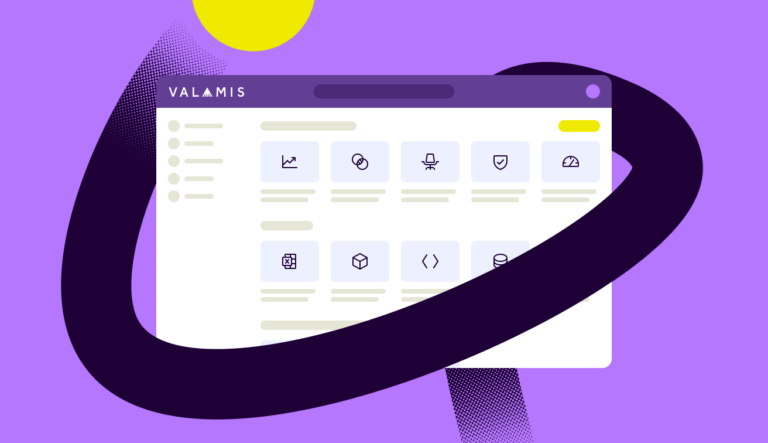Streamlining global compliance training: Navigating international requirements with digital learning
Each new market demands another layer of complex compliance, every regional office brings another set of requirements, and any day could bring regulatory changes that could require overhaul of a training program.

Picture this: Your company just launched a new product in Germany, but your mandatory compliance training materials are trapped in English and Spanish. Meanwhile, your Singapore team urgently needs updated certifications to meet local regulations and global standards, and your Brazilian office is drowning in attempts to track completion rates for their region-specific requirements.
Sound familiar?
In today’s interconnected business world, these scenarios reflect the daily reality for L&D and HR professionals managing global compliance training. Each new market demands another layer of complexity, every regional office brings another set of requirements, and any day could bring regulatory changes that could require overhaul of a training program. As a Brandon Hall Group™ Smartchoice® Preferred Provider, Valamis is well-positioned to support global organizations with an easier, more efficient compliance training experience.
The Global Compliance Challenge
The international nature of modern business creates unique compliance training hurdles. At Brandon Hall Group™, we consistently see organizations grappling with most, if not all, of these critical challenges:
- Navigate different regulatory requirements across multiple jurisdictions, each with their own specific training mandates and deadlines
- Maintain accurate, up-to-date content in multiple languages while ensuring consistency of core messages
- Coordinate training rollouts across different time zones and regional offices
- Track completion rates and certification status across various national standards
- Balance local relevance with global training standards
- Manage varying data privacy requirements for training records (GDPR in Europe, CCPA in California, LGPD in Brazil, etc.)
- Adapt to different cultural approaches to learning and professional development
The Risk of Inadequate Global Compliance Management
Maintaining the status quo in global compliance training is inefficient and exposes organizations to many possible consequences. They include:
- Hefty penalties and legal exposure from regional regulatory violations
- Missing critical country-specific compliance deadlines due to inadequate tracking
- Cultural misunderstandings that derail training effectiveness
- Scrambling to produce documentation during multi-jurisdiction audits
- Deteriorating or inconsistent training standards across regions, compromising global operations
- Wasted resources because of fragmented regional training systems
- Risking permanent damage to global brand reputation from compliance failures
Best Practices for International Compliance Training
1. Create a Global-Local Balance in Content Management
The challenge of maintaining consistent training standards while addressing local requirements is one of the most complex aspects of global compliance training. A centralized content management approach through a modern LMS provides the foundation for solving this challenge.
By establishing a single source of truth for all compliance content, organizations can ensure consistency in core messages while allowing for necessary regional variations. This approach significantly reduces the risk of outdated or conflicting information while streamlining the content update process across all locations.
Modern LMS solutions can help you:
- Build and maintain a core global training library while allowing for regional customization
- Develop master content that can be efficiently localized while preserving consistency and key messages
- Empower regional administrators to add location-specific requirements
- Monitor content versions across languages and regions
- Identify and flag content for review when regulations change in specific regions
2. Implement Smart Language Management
Language barriers can severely impact the effectiveness of compliance training and increase organizational risk. Smart language management ensures that critical compliance concepts are accurately conveyed across all languages while maintaining the efficiency of your training program.
A systematic approach to language management helps ensure that every employee, regardless of their primary language, receives the same quality of training and fully understands their compliance obligations.
A well-developed language management strategy should:
- Deploy multilingual training content with synchronized updates across all versions
- Implement automated translation workflows for rapid content localization
- Create and maintain glossaries of compliance terminology in multiple languages
- Provide seamless language-switching capabilities for learners
- Validate assessment questions across all language versions
3. Leverage Advanced Audience Targeting
In global organizations, delivering the right training to the right people is crucial for maintaining compliance while avoiding information overload. Advanced audience targeting eliminates the confusion and inefficiency of one-size-fits-all approaches by ensuring employees only see training relevant to their role, location and regulatory environment.
This precision in training delivery improves compliance rates and increases engagement by eliminating irrelevant content from employees’ learning paths.
Sophisticated targeting capabilities should:
- Automate training assignments based on employee location, role and regulatory requirements
- Generate dynamic groups that update as employees change roles or locations
- Configure matrix-based training assignments that account for both global and local requirements
- Deploy emergency training to specific regions when regulations change
- Filter content to show employees only the compliance training relevant to their situation
4. Implement Robust Global Reporting Systems
The ability to monitor, track and demonstrate compliance across multiple jurisdictions is essential for risk management and audit readiness. A strong global reporting system provides real-time visibility into compliance status across all operations, enabling proactive management of compliance risks and quick response to audit requests.
This view of compliance activities helps organizations identify potential issues before they become problems and maintain documentation that satisfies regulatory requirements in all jurisdictions.
If your reporting infrastructure doesn’t provide the following features for compliance, you might want to rethink your learning tech stack:
- Generate jurisdiction-specific compliance reports on demand
- Display real-time dashboards showing global compliance status
- Monitor certification expiration dates across different regulatory frameworks
- Track completion rates by region, department, and requirement type
- Streamline responses to audit requests from any jurisdiction
- Deliver automated compliance alerts based on regional requirements and deadlines
5. Build Cultural Intelligence into Training Delivery
Cultural differences can significantly impact the effectiveness of compliance training. What works well in one region might be ineffective or even counterproductive in another.
By incorporating cultural intelligence into training delivery, organizations can ensure that compliance messages resonate with employees across different cultural contexts while maintaining the integrity of the compliance requirements.
A culturally intelligent training approach should:
- Customize training delivery methods to regional preferences
- Incorporate different business practices and cultural norms
- Create examples and scenarios relevant to each region
- Adapt assessment methods to cultural learning styles
- Design social learning features that respect cultural differences

Compliance training checklist
Streamline your compliance training and keep your team on track with our editable PDF checklist.
Download the checklist6. Build a Network of Global Compliance Champions
While technology is crucial, the human element of compliance training cannot be overlooked. Creating a network of compliance champions across your global operations provides vital local expertise and cultural context that no system alone can deliver.
These champions serve as bridges between global compliance requirements and local implementation, ensuring that training resonates with regional teams while maintaining corporate standards.
An effective compliance champion network should:
- Designate regional representatives who understand both local requirements and global standards
- Organize regular meetings between champions to share best practices and challenges
- Create feedback loops between local teams and global compliance managers
- Provide champions with resources and authority to adapt training to local contexts
- Establish clear communication channels for rapid response to regulatory changes
- Empower champions to conduct local training needs assessments
7. Automate Certification Management
Managing certifications across multiple jurisdictions can quickly become overwhelming without proper automation. An automated certification management system reduces the administrative burden while ensuring that no certification deadlines are missed.
This approach to certification tracking helps organizations maintain compliance status across all regions while reducing the risk of overlooked requirements or expired certifications.
An effective certification management system should:
- Track different certification requirements by region
- Automatically trigger recertification processes based on local requirements
- Maintain digital records that satisfy various jurisdictional requirements
- Generate automated reminders in appropriate time zones and languages
- Create certification paths that combine global and local requirements
Real-World Success: The Vaillant Group’s Global Training Transformation
The challenges of managing international compliance and training requirements become clear when looking at the experience of the Vaillant Group. Though compliance wasn’t the sole focus of the project, this global leader in heating, ventilation and air-conditioning technology demonstrates how to deploy and use an LMS effectively in an international setting.
Operating across multiple countries with diverse regulatory requirements and training needs, Vaillant faced many of the challenges discussed above: managing training across different languages, ensuring consistent quality across regions, and maintaining clear oversight of completion rates and other key metrics.
By implementing a comprehensive digital learning solution, the Vaillant Group transformed its approach to training and compliance management by working with Valamis. Their success story demonstrates how the right technology can help overcome international training challenges:
- Unified training delivery across multiple countries and languages, ensuring consistent quality while meeting local requirements
- 240% increase in eLearning engagement, showing how proper localization and delivery can improve training effectiveness
- Streamlined compliance reporting across jurisdictions, making it easier to demonstrate regulatory compliance
- Enhanced ability to adapt to regional requirements while maintaining global standards
- Improved training consistency while preserving local relevance and cultural considerations
Transform Your Global Compliance Training
The key to successful international compliance training lies in finding the right balance between global consistency and local relevance. A sophisticated learning management system can help transform your compliance training from a complex global challenge into a strategic advantage that supports your organization’s worldwide operations. The right platform can also help you extend your training capabilities to external partners and stakeholders, ensuring compliance throughout your entire business ecosystem.
Need guidance on optimizing your global compliance training program? Now is a great time to contact Valamis for personalized guidance on creating efficient, effective compliance training solutions tailored to your organization’s specific needs.




